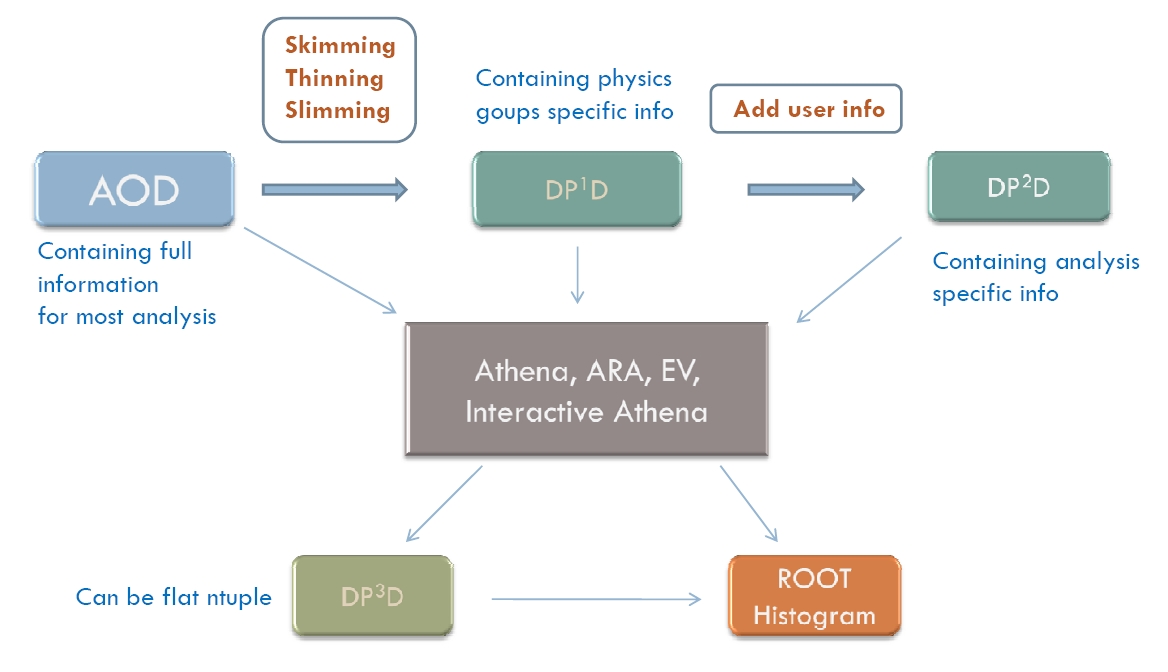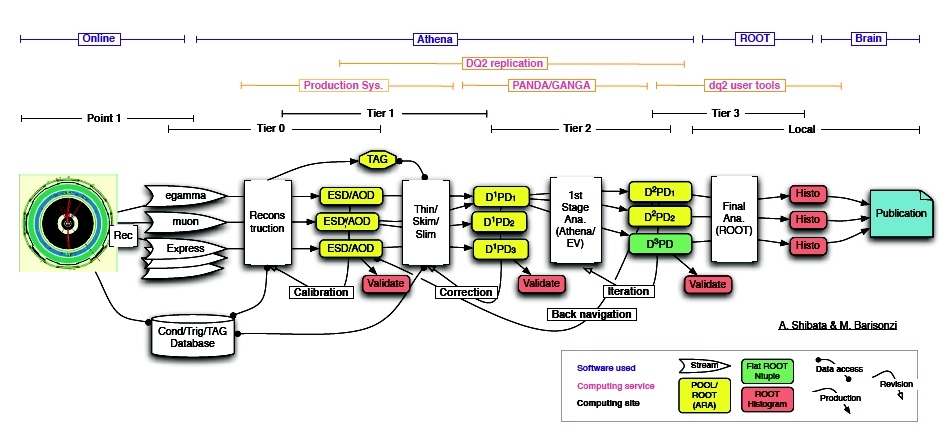Analysis
The main purpose of the Analysis Group is connect the phenomenology work that we develop as theoretical physicist at PUC with the real world, which in this case correspond to the data that the ATLAS experiment can detect and record from the proton-proton collisions at the LHC.
In this task we have available some of the ATLAS computing resources, as CERN computing accounts and access both to the Athena software and Grid services. To obtain access to these resources is recommended that each member of the Analysis Group has a working membership in the ATLAS virtual organization, both for CERN account and Athena software access, and also an electronic certificate to navigate for the Grid. Once the members have these credentials the analysis work can be developed properly.
The analysis work, as we understand in our group, involve commonly the next steps:
- Research about the particle physics model that we would like to study at the LHC energy regime,
- Production of the simulated data containing the main features of the model,
- Identification of the real data corresponding to the simulated energy and luminosity (in case that this exist),
- Analysis and comparison of these data through computational algorithms using the ATLAS software, and
- Exposition of the results using plots, tables or your preferred format.
The results of this procedure could carry us, in the best case, to the "discovery" of exotic signals in the LHC data, or more usually to restrictions over the new models. In any case this task become very important in times where the theoretical community need for tests of fundamental concepts as Super-Symmetry or Extra Dimensions for example. Summarizing our work is directed towards the research about new and interesting tools that allow us the decoding of physics questions using the ATLAS framework.

